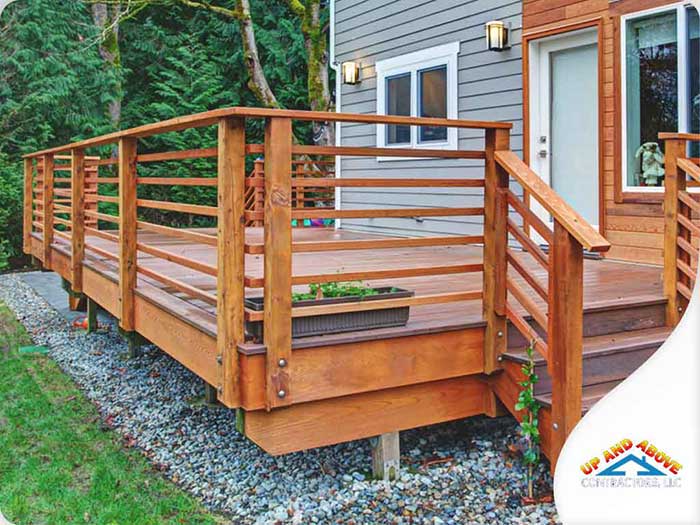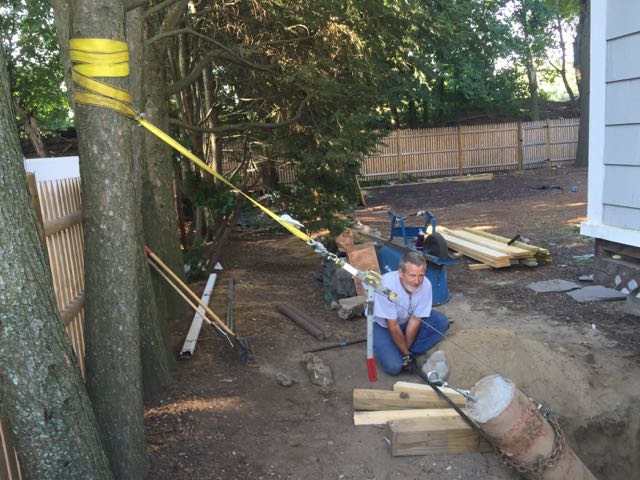Expert Tips for Installing Deck Footings to Support Your Outdoor Space
When it comes to developing a deck, one of the most important components to take into consideration is the installment of correct grounds. These grounds are the foundation upon which your outside space will rest, providing security and assistance for years to come. What precisely does it take to set up deck footings correctly?
Importance of Correct Deck Grounds
Correct deck grounds are necessary for making certain the security and long life of your outdoor area. Without solid and effectively installed footings, your deck might become unpredictable, leading to security threats and expensive repairs.

In enhancement to security, appropriate deck footings also contribute to the durability of your outside room (Deck Footings). Grounds that are made and constructed to endure the elements and dirt problems in your area will aid stop the deck from clearing up or moving over time. By ensuring the grounds are correctly sized and installed, you can lessen the risk of damage to the deck framework, extending its life expectancy and reducing the demand for expensive fixings or replacements

Picking the Right Kind of Grounds
When picking the appropriate kind of grounds for your deck, it is essential to consider factors such as dirt problems, neighborhood building ordinance, and the general style of your outside area. The sort of footing you choose will certainly play a crucial role in making certain the security and long life of your deck.
One typical type of ground is the concrete ground. Concrete grounds are suitable for many soil conditions and supply superb support for decks. They are generally set up listed below the frost line to protect against moving and clearing up as a result of cold and thawing cycles. Another alternative is helical piers, which are optimal for locations with unstable soil or high water tables. These piers are screwed into the ground and provide solid assistance for the deck.
Sometimes, you may need to use specialized footings, such as heap grounds or deep foundations, if you are developing a multi-level or large deck. These footings are created to distribute the weight of the deck over a larger area, ensuring stability and stopping clearing up or sinking.
Before selecting a type of ground, it is necessary to get in touch with neighborhood structure codes and policies to guarantee compliance. In addition, think about the design and intended use your outside space. Variables such as the dimension, shape, and load-bearing needs of your deck will certainly influence the kind of footing that is most appropriate.
Preparing the Ground for Footing Installation
To effectively prepare the ground for footing setup, it is essential to assess the dirt conditions and take essential steps to ensure security and sturdiness of the deck. The very first step is to excavate the location where try this website the grounds will certainly be installed. The deepness of the excavation will depend upon the frost line in your region and the certain requirements of the deck layout. It is important to remove any type of greenery, rocks, or particles from the excavation to guarantee a strong foundation.
When the location has actually been dug deep into, the next action is to portable the soil. This can be done making use of a plate compactor or by using a hand tamper. Condensing the dirt helps to get rid of any type of gaps or air pockets, which can lead to clearing up and instability with time.
After compacting the soil, it is essential to lay a layer of crushed rock or smashed rock at the end of the excavation. This will supply water drainage and aid to stop water from pooling around the footings, which can result in disintegration and instability.
Step-by-Step Overview to Putting Up Deck Footings
After effectively preparing the ground for footing installation, the next step is to begin the process of setting up deck grounds. This detailed overview will certainly supply you with a clear understanding of just how to mount deck grounds for your exterior room.
Determine the location: Start by marking the positions of the deck footings using stakes and string. Ensure that the locations align with the read more design and layout of your deck.
Dig the holes: Make use of a post opening miner or an auger to dig the openings for the grounds. The depth and diameter of the holes should remain in conformity with neighborhood structure codes and the certain needs of your deck layout.
Level the holes: Use a level to ensure that the openings are dug to the appropriate depth and are level with each other. (Deck Footings)
Include crushed rock: Location a layer of gravel at the end of each opening to boost drainage and avoid the timber from decomposing.
Place the grounds: Position the footings right into the openings, making certain they are level and plumb. Use a degree and a determining tape to make sure accuracy.
Safeguard the grounds: Pour concrete right into the openings around the footings, loading them to the top. Utilize a post degree to guarantee the footings continue to be level as the concrete collections.
Enable time for curing: Allow the concrete remedy according to the manufacturer's guidelines before waging the deck building and construction.
Typical Mistakes to Stay Clear Of During Footing Installment
One crucial aspect to take into consideration during the installment of deck footings is staying clear of common blunders that can jeopardize the security and longevity of your exterior space. While deck footings might look like a straightforward and simple component of the construction procedure, neglecting particular factors can bring about costly repair services and potential security threats down the line.

Furthermore, overlooking to mount appropriate drainage measures can cause water to accumulate around the grounds, resulting in rot, degeneration, and the ultimate weakening of the deck's structure. Moreover, making use of the incorrect kind of footing material or falling short to properly protect the footings can endanger their structural honesty.
To stay clear of these blunders, it is important to speak with an expert or comply with sector guidelines to ensure proper ground installation. By doing so, you can make certain the security and durability of your outdoor area, offering a secure and enjoyable environment for many years to find.
Verdict
Finally, installing proper deck footings is crucial for the security and long life of your outside area. By picking the best sort of footings and properly preparing the ground, you can guarantee a solid foundation for your deck. Following a step-by-step guide and staying clear of usual errors throughout footing setup i loved this will additionally boost the toughness and security of your deck.
Correct deck footings are vital for making sure the stability and durability of your outside area. The grounds serve as a connection between the ground and the deck, enabling the weight of the deck and its passengers to be dispersed equally right into the dirt.One typical type of ground is the concrete footing. Put the grounds: Position the grounds into the holes, making certain they are level and plumb. Safeguard the footings: Put concrete right into the holes around the grounds, filling them to the top.
Comments on “Deck Footings 101: Navigating the Basics for a Secure and Sturdy Deck”